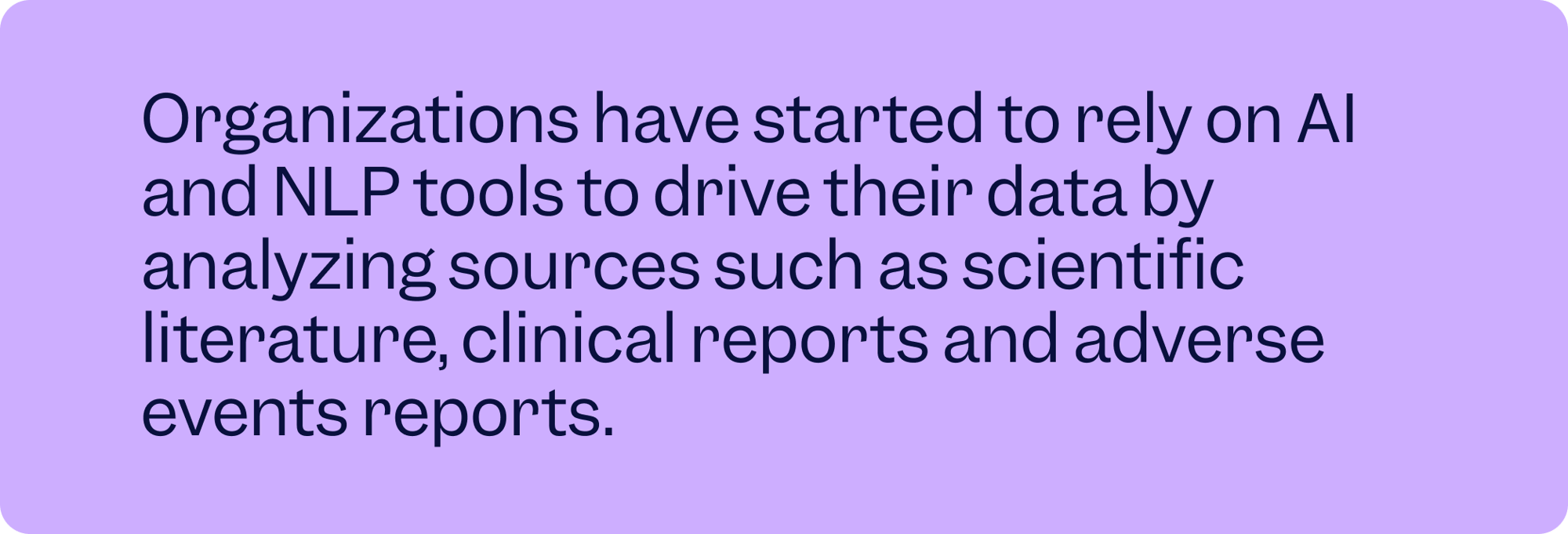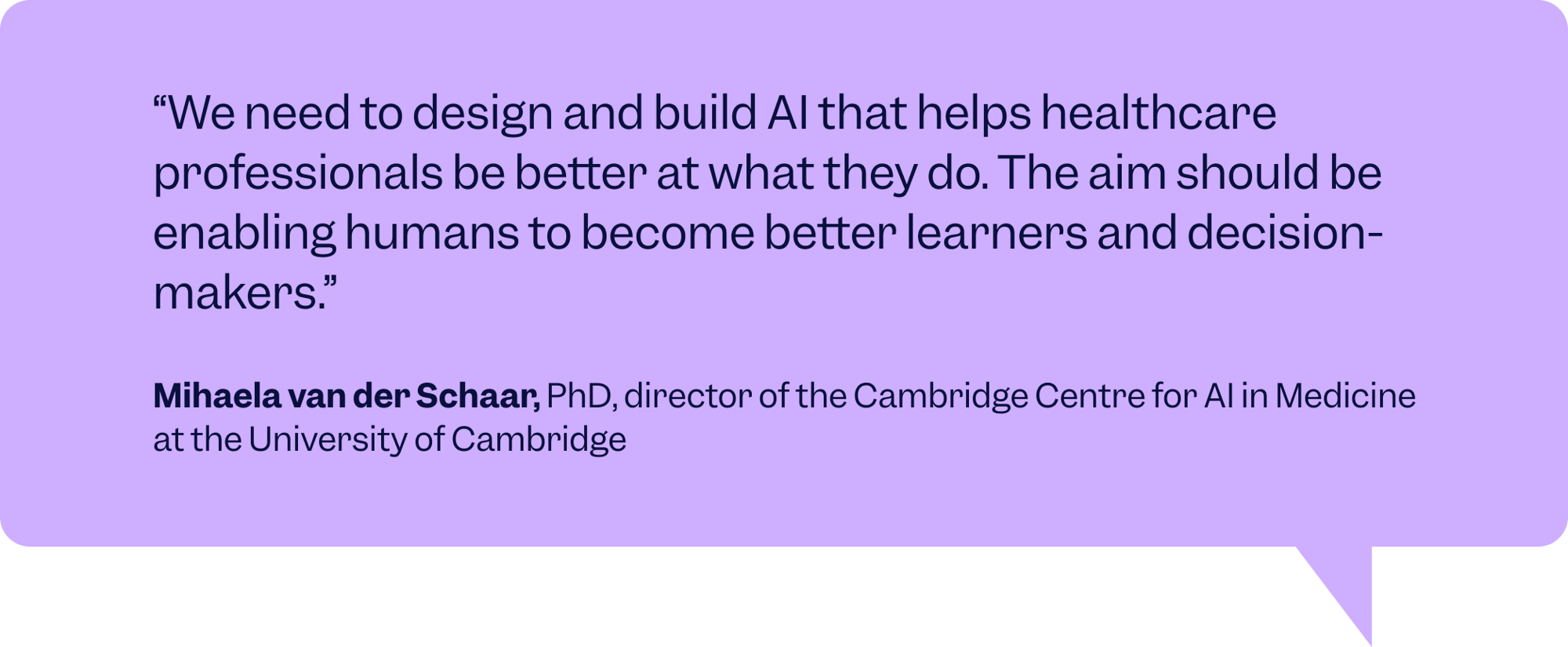EMEA Office
Louizalaan 489
1050 Brussels
Belgium

One of the most revolutionary technologies of our time has made a significant impact in the ever-evolving world of the life sciences - Artificial Intelligence and Natural Language Processing.
As we trace the evolution of computational intelligence, the interplay between Artificial Intelligence (AI), Machine Learning (ML), Deep Learning (DL), and Natural Language Processing (NLP) becomes increasingly apparent. This evolution journey is marked by significant milestones.
The first milestone is Alan Turing's pioneering creation of the first machine capable of demonstrating AI principles. Another key milestone is the development of Deep Blue by IBM, a chess-playing computer program.
These key developments have shaped the evolution of AI technology and laid the groundwork for the complex algorithms that drive today's ML and DL applications, which are at the heart of modern NLP advancements.


During recent years, AI and NLP have grown tremendously in the life science industry. AI and NLP are being used most often to manage data and discover the outputs in a faster and more accurate manner. Life sciences companies increasingly rely on AI and NLP to analyze extensive datasets such as scientific literature and clinical reports.
According to Drug Development & Delivery, AI-powered systems scans adverse event reports and medical literature to enhance drug safety. This is a proactive approach that ensures regulatory compliance and the development of safer pharmaceuticals by taking necessary actions in advance.
The research and development of medicines is also evolving. In recent years, we have been increasingly hearing about “Personalized medicine”. This approach is founded on four key principles (Four Ps) which are:
Synergizing personalized medicine with AI and NLP tools leads to more accurate results. RWS emphasizes that AI and NLP are driving the development of personalized medicine by meticulously analyzing patient-specific data, including genetic information and medical histories. Additionally, treatment plans are used to customize for better patient outcomes.

AI and NLP have revolutionized the drug discovery process by analyzing massive datasets. AI can identify potential drug candidates faster, so it significantly reduces development timelines, time-to-market and costs.
AI powered predictive analytics can help to optimize clinical trial design, identify suitable participants, predict trial success, ultimately speed up the development of life-saving therapies and lead to more efficient and cost-effective trials.
Continuous monitoring of medical and scientific literature allows healthcare professionals to stay updated on the latest research and treatments. AI tools efficiently point to specific topics or summarize relevant articles, saving professionals from manual reading.
With the help of AI, businesses can automate data analysis, monitor compliance in real-time, and leverage predictive analytics to proactively identify potential compliance issues and ensure adherence to complex regulatory requirements.
AI-driven algorithms can sift through large volumes of adverse event reports, ensuring faster detection of potential safety concerns and thereby enhancing regulatory compliance and ensuring prompt actions to address emerging issues.
Consider a real-world scenario, where collaboration among stakeholders is crucial to shape artificial intelligence (AI) systems. To develop robust AI systems, and establish ethical guidelines which promote patient and provider trust, organizations should bring minds and expertise from multiple domains together. The goal must be to unlock AI's full potential in healthcare through research, innovation, and interdisciplinary collaboration. AI integration leads to better patient outcomes, greater operational efficiency, and more personalized treatments, ultimately improving quality of care.


AI and NLP can transform the way we approach research, diagnosis, and treatment in the life sciences and help organizations to be more precise on diagnosis, targeted therapies, and safer drug development.
Although AI and NLP have only begun their journey, the global AI in the healthcare market will be worth USD 164.10 billion by 2029 according to Fortune Business Insights. Technology experts and life sciences professionals will increasingly continue to collaborate and discover groundbreaking developments and improve healthcare outcomes in the years to come.
As exciting as it may be, these evolving technologies pose non-negligible challenges that require meticulous consideration. AI and NLP can only revolutionize healthcare if the right strategies, expertise, and ethical frameworks are in place. To gain a competitive edge, organizations must leverage AI in a way that treats data as a valuable asset throughout the entire enterprise. This involves adopting a human-centered and trustworthy approach to ensure the responsible and effective use of AI technologies.
To create truly agile and trustworthy solutions, life sciences must rethink their business models and blend strategy and AI insights. For instance, in clinical trials AI can be harnessed to not only accelerate trial processes but also to streamline the tedious tasks of data collection and artifact creation for clinical site investigators. This strategic use of AI allows investigators to redirect their focus towards value-added services, such as patient engagement. Similarly, organizations in pharmacovigilance can automate adverse events to help prioritize resource allocation, enabling organizations to shift resources towards high-value analysis bolstered by cognitive insights and recommendations.
Explore what lies at the forefront of innovation and quality in life sciences.
EMEA Office
Louizalaan 489
1050 Brussels
Belgium
US Office
Scilife Inc.
228 E 45th St. RM 9E
New York, NY 10017
PRODUCT
INDUSTRIES
RESOURCES
COMPANY
Contact Us
EMEA Office
Louizalaan 489
1050 Brussels
Belgium
US Office
Scilife Inc.
228 E 45th St. RM 9E
New York, NY 10017
Copyright 2025 Scilife N.V. All rights reserved.